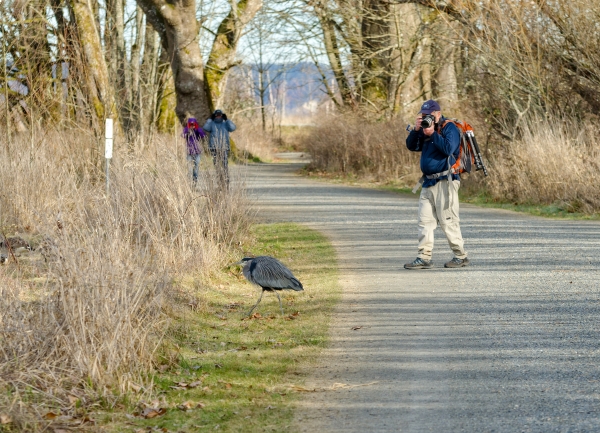
The patient observer will be rewarded with many opportunities to view wildlife at Billy Frank Jr. Nisqually National Wildlife Refuge. Every season brings a new wealth of discoveries. Depending on the season, you will be rewarded with nature small and large, including: aquatic insects, amphibians, reptiles, an abundance of birds, and mammals (weasel, beaver, coyote, deer). We'd like to share with you our best advice for successful wildlife observations.
When
Early morning, late afternoon, and when the weather clears after a storm are good times to observe wildlife. Spring bird migration usually goes from mid-March through mid-May, and fall migration from August through early-December. The Refuge is open daily during daylight hours.
Where
Be sure to look in a variety of habitats, along the "edges" between habitats, and remember to look high and low as well as at eye level.
How
You will see more animals if you are QUIET. Be sure to listen for animal calls or songs, or try sitting down along the trail and waiting for movement.
What to Bring
Binoculars or spotting scopes are helpful for observing wildlife, and a good field guide will help you identify what you see. If you a birder, be sure to bring a copy of our Wildlife List. Discovery Packs, which include activities for children in grade levels 3 through 6, and binoculars are available for check-out from the Visitor Center with a valid photo ID. You are always welcome to bring your camera and a lunch to eat along the trail. Don't forget your raincoat.